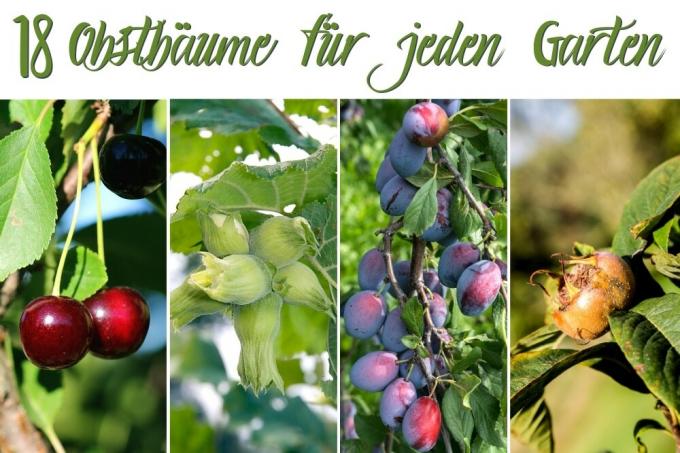
table of contents
- 18 fruit trees for every garden
- Pome fruit
- Stone fruit
- Nuts / nuts
- Delicious wild fruit
- Rare / exotic species
- frequently asked Questions
Freshly picked fruit from your own garden tastes particularly good. So that you can find the right tree for you and your family, we present the best 18 species for the garden plus the most popular varieties.
In a nutshell
- Apples are the most commonly grown fruit in German gardens
- numerous varieties in different heights
- almost all fruit trees are available in different growth forms
- Dwarf forms and varieties that are grafted on weak bases are ideal for small gardens
- Sweet cherries and walnut trees, which can each be up to 20 meters high, require a lot of space
18 fruit trees for every garden
Every child knows apple and pear trees. But have you ever tried such delicious types of fruit as mirabelle plums, medlars or nashi pears? We would like to introduce you to these and other fruit trees suitable for both small and large gardens.
Pome fruit
The various fruit trees are botanically differentiated into pome and stone fruit. Pome fruit is the name given to fruit that has a core - usually five-chambered - inside. This contains the seeds, which in turn can be used to propagate the wood.
Tip: Many fruit trees can get very tall and develop broad crowns. If you have a small garden or want to harvest fruit from your own balcony, it is better to choose varieties that stay low: dwarf fruit, Column fruit and low trunk heights (e.g. B. Bush tree, spindle) are also suitable for limited planting areas.
Apple (Malus domestica)
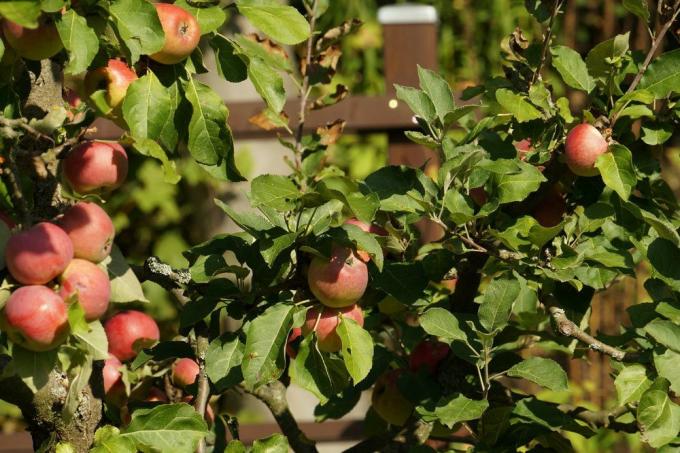
- Location and soil: sunny location, loamy and nutrient-rich soil
- Growth and size: available in various sizes, from the small columnar tree to the tall tall trunk
- Special features: the most popular fruit, huge selection of varieties, especially late-ripening apples are often easy to store
- Fertilization: every apple tree needs a suitable pollinator variety that blooms at the same time
- Fruit ripening and harvest time: between August and October, depending on the variety
- Use: fresh consumption, stored apples or for preserving / canning
- Popular varieties: 'Elstar' (sour), 'Gravensteiner' (sweet, very aromatic summer apple), 'Flamed Cardinal' (sour, very old and proven variety), 'Danziger Kantapfel' (also 'Berner Rosenapfel', juicy, richly fruity), 'Golden Delicious' (winter apple, very easy to store, sweet and juicy), 'White clear apple' (ripens as early as the end of July, sour and juicy)
Pear (pyrus communis)

- Location and soil: full sun and warm, humus-rich and loamy soil
- Growth and size: Pear trees are naturally vigorous and can get very tall, but there are also varieties that have been refined to small trunk shapes for the small garden
- Special features: Pear trees are very suitable for training to be in a trellis
- Fertilization: Fertilizer variety necessary
- Fruit ripening and harvest time: between August and October, depending on the variety
- Use: Pears can be stored for a maximum of four weeks, therefore either fresh or for canning
- Popular cultivars: 'Kaiser Alexander' (winter pear, juicy and sweet), 'Rote Williams Christ' (summer pear, sweet and aromatic), 'Albertine' (autumn pear, very juicy and sweet)
Quince (Cydonia oblonga)
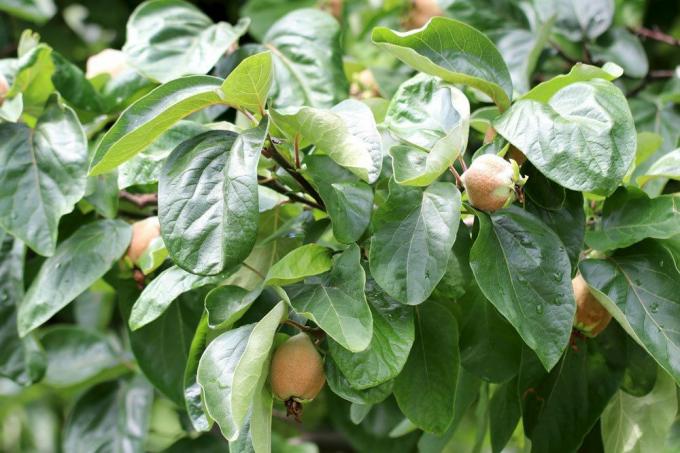
- Location and soil: full sun and warm, soil well drained and rich in humus, fresh to moist
- Growth and size: depending on the variety and trunk height, a small to medium-sized tree, can grow quite expansively
- Special features: belongs to the seldom cultivated types of fruit, fruit trees provide very vitamin-rich and aromatic fragrant fruits
- Fertilization: almost all varieties are self-fertile, but the pollinator tree has a higher yield
- Fruit ripening and harvest: Fruit ripens very late between October and November
- Use: raw fruits inedible, very suitable for boiling and canning (quince jelly, quince liqueur, etc.)
- Popular cultivars: apple quince, pear quince
Stone fruit
In contrast to pome fruit, stone fruit species do not have several, but only a single, larger seed core.
Tip: For those who cannot decide between different trees, duo trees with two to three different varieties on one tree are a good solution.
Apricot (Prunus armeniaca)

- Location and soil: full sun and warm, loose soil, well-drained and rich in humus
- Growth and size: small tree about five to six meters high, rounded crown
- Special features: suitable for small gardens with lots of sun and a protected location
- Fertilization: self-fertile, but the second pollinator tree increases the yield
- Fruit ripening and harvest time: August
- Use: fresh consumption or for canning / canning, juicy and sweet fruits
- Popular cultivars: 'Bergeron' (large fruits), 'Armi-Col' (column apricot), 'Orangered' (sweet and aromatic)
Mirabelle / yellow plum (Prunus domestica subsp. syriaca)
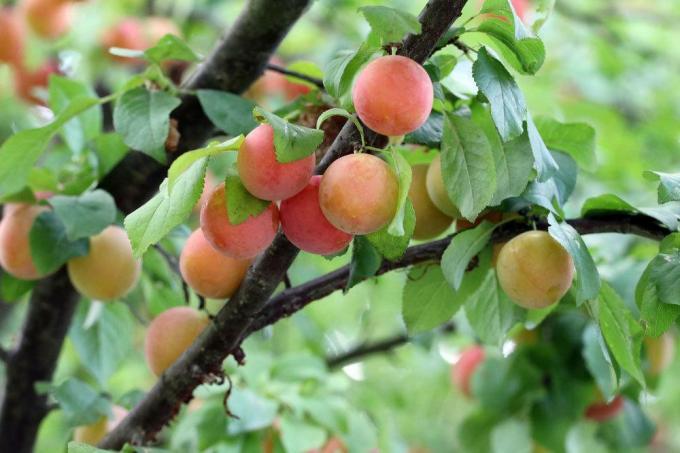
- Location and soil: sunny to partially shaded, soil rich in nutrients, loose and moist
- Growth and size: strong-growing tree
- Special features: closely related to plums and plums, but round, yellow fruits
- Fertilization: usually self-fertile, but a second pollinator tree increases the yield significantly
- Fruit ripening and harvest: early to mid-September
- Use: fresh consumption and processing (e.g. B. Compote, jam, liqueur)
- Popular cultivars: 'Mirabelle von Nancy' (very old variety with high yield), 'Ruby' (red column mirabelle)
Plum and plum (Prunus domestica)
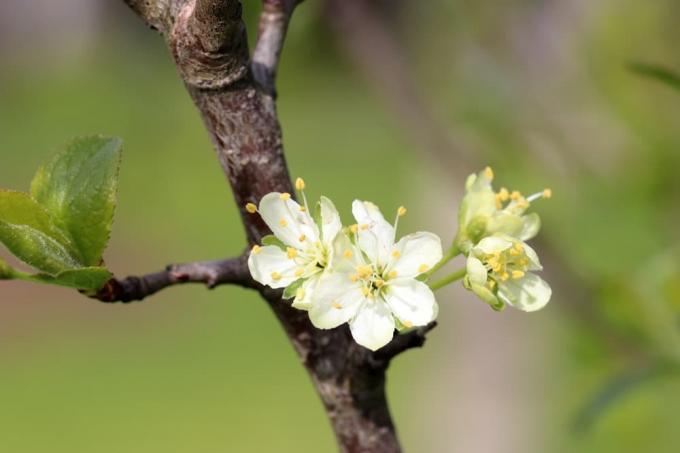
- Location and soil: sunny and warm, soil rich in nutrients, humic and moist
- Growth and size: depending on the variety and the underlay, growth heights between four and eight meters
- Fertilization: Plums are mostly self-pollinating, but the yield is better with a second pollinating variety
- Fruit ripening and harvest time: between July and October, depending on the variety
- Use: Plums and plums cannot be stored, can be eaten fresh or for preserving / canning (e.g. B. for plum jam)
- Popular cultivars: 'Katinka' (ripening early, very aromatic), 'Cacaks Schöne' (medium early, sour taste, very productive), 'Hanita' (sweet, very robust, ripens from the end of August)
Peach and nectarine (Prunus persica)

- Location and soil: sunny and warm, soil rich in humus and well drained
- Growth and size: small tree with a loose crown, up to five meters in height
- Special features: thrives best in a wine-growing climate, nectarines are a hairless variant of the peach
- Fertilization: usually self-fertile
- Fruit ripening and harvest: August to September, depending on the variety
- Use: fresh consumption and processing (e.g. B. Compote, jam etc.)
- Popular cultivars: 'Kernechter vom Vorgebirge' (slightly sour, aromatic), 'Revita' (sweet), 'Tellerpfeach' (flattened fruits, small trees)
Sour cherry / sour cherry (Prunus cerasus)

- Location and soil: sunny to partially shaded, loose soil and rich in nutrients
- Growth and size: remain significantly smaller than sweet cherries, average height between four and six meters
- Special features: are more robust and less demanding than sweet cherries
- Fertilization: most varieties are self-fertile
- Fruit ripening and harvest: depending on the variety between the end of May and the beginning of August, the harvest period is given in cherry weeks
- Use: Consumption fresh or for preserving / canning, not storable
- Popular cultivars: 'Carnelian' (sweet and sour, large fruits), 'Jade' (mildly sour, high-yielding)
Sweet cherry (Prunus avium)
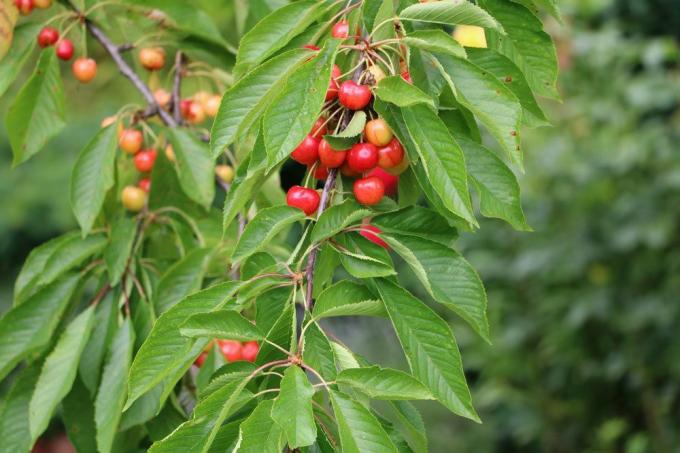
- Location and soil: full sun and warm, soil rich in nutrients, loose and slightly sandy
- Growth and size: can be up to 20 meters high and very expansive, switch to sour cherries or column cherries in small gardens
- Special features: are very sensitive to climate and location, need a lot of space
- Fertilization: need pollinator variety
- Fruit ripening and harvest time: depending on the variety between the end of May and the end of July / beginning of August, the time of ripening is given in cherry weeks (between 1 and 8 - very early to late)
- Use: Consumption fresh or for preserving / canning, not storable
- Popular cultivars: 'Burlat' (dark red, sweet early variety), 'Regina' (late ripening, sweet and very large fruits), 'Buttner's red Cartilage cherry ‘(late, yellow-red fruits, very old variety), 'Hedelfinger Riesenkirsche‘ (dark red, very large fruits, aromatic)
Nuts / nuts
At this point, some readers will rub their eyes in amazement, but in fact, from a botanical point of view, nuts and nuts also belong to the fruit trees.
Sweet chestnut (Castanea sativa)
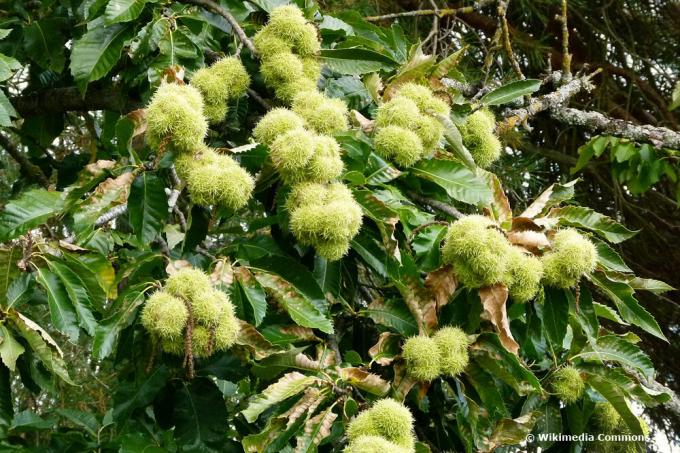
- Location and soil: sunny to partially shaded, soil rich in nutrients with an acidic pH value, incompatible with lime
- Growth and size: Chestnut trees grow up to 25 meters high, only for large gardens with enough space
- Fertilization: always plant 2 to 3 trees together, as the male and female flowers of a tree bloom at different times
- Fruit ripening and harvest time: September to November
- Use: popular as roasted nuts, for soups and fillings
- Popular cultivars: 'Marlhac' (very robust new breed), 'Marsol' (strong, robust), 'Marigoule', 'Bouche de Bétizac', 'Tisenser' (Austrian breed)
Hazelnut (Corylus avellana)
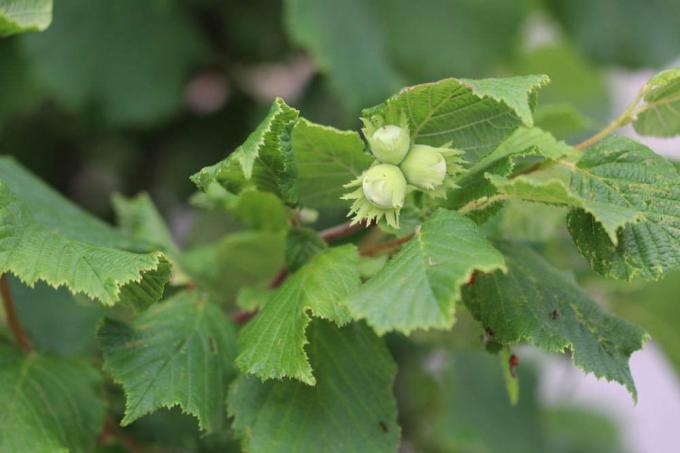
- Location and soil: sunny to partially shaded, loose soil and rich in nutrients
- Growth and size: as a shrub or small tree, up to seven meters high and just as wide
- Special features: local, very robust fruit, very good for planting hedges
- Fertilization: needs a second type of pollinator
- Fruit ripening and harvest: September to October
- Use: Hazelnuts can be stored very well
- Popular cultivars: 'Englische Giesen', 'Hallesche Riesennuss' (vigorous, very productive), 'Wunder aus Bollweiler' (aromatic)
Almond (Prunus dulcis)

- Location and soil: sunny to partially shaded and warm, soil rich in nutrients, humic and rather dry
- Growth and size: small, richly branched tree, average height up to six meters
- Special features: very suitable for small, sunny gardens
- Fertilization: usually self-fertile, but another almond or peach tree as pollinator increases the yield
- Fruit ripening and harvest: late September to early October
- Popular cultivars: 'Pfälzer Fruchtmandel' (soft, sweet pulp), 'Dürkheimer Krachmandel' (large fruits)
Walnut (Juglans regia)

- Location and soil: sunny to partially shaded and warm, soil deep, moist and slightly sandy
- Growth and size: Walnut trees can be up to 20 meters high and just as wide
- Special features: only as a solitary in large gardens, needs a lot of space
- Fertilization: Seedlings need a second pollinator tree nearby, cultivars often self-pollinating
- Fruit ripening and harvest: between the end of September and the end of October
- Use: Walnuts can be stored very well
- Popular cultivars: 'Seifersdorfer Runde' (stays quite low, becomes approx. 10 meters high), 'Jupiter' (self-fruiting), 'No. 139 ‘(self-fruiting)
Delicious wild fruit
If you want to try something new, we recommend these local fruit trees to you: ours Grandmothers cooked delicious, vitamin-rich spreads from mountain ash, cornel cherry and Co. or prepared delicious ones Liqueurs. After all, nature offers a richly laid table, and insects and birds are also happy about the planting of such a tree - it feeds animals as well as us humans.
Rowan / Rowan (Sorbus aucuparia)
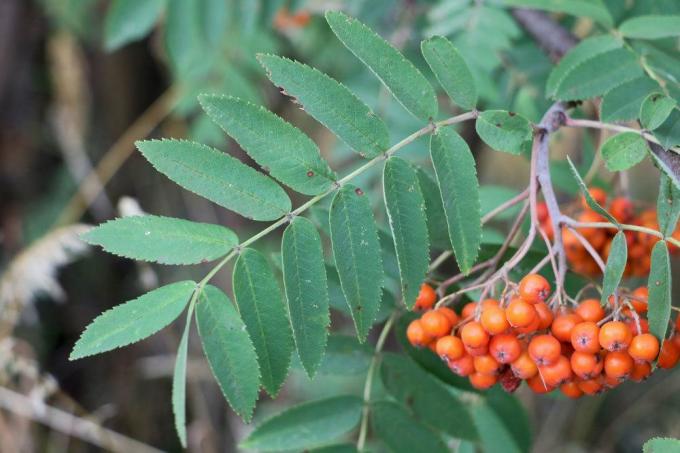
- Location and soil: sunny to partially shaded, soil fresh to wet
- Growth and size: slender, often multi-stemmed fruit trees with heights between eight and twelve meters
- Special features: valuable wood for birds, very fast-growing
- Fertilization: self-fertilizing
- Fruit ripening and harvest: from August
- Use: Fruit is inedible raw, but can be cooked to make jams or compotes
- Popular cultivars: 'Edulis' (specially bred for human consumption)
Cornelian cherry (Cornus mas)

- Location and soil: sunny to shady, undemanding in terms of soil, likes lime
- Growth and size: large shrub or small, often multi-stemmed tree, up to approx. getting five meters high
- Special features: native wood, valuable insect pasture and bird nutrient wood
- Fertilization: self-fertilizing
- Fruit ripening and harvest: from August
- Use: as jelly, jam, fruit juice or liqueur
- Popular cultivars: 'Jolico' (particularly large fruits), 'Schönbrunner Gourmet Dirndl' (high-yielding), 'Kazanlaker' (small, only approx. 2 meters high)
Medlar (Mespilus germanica)
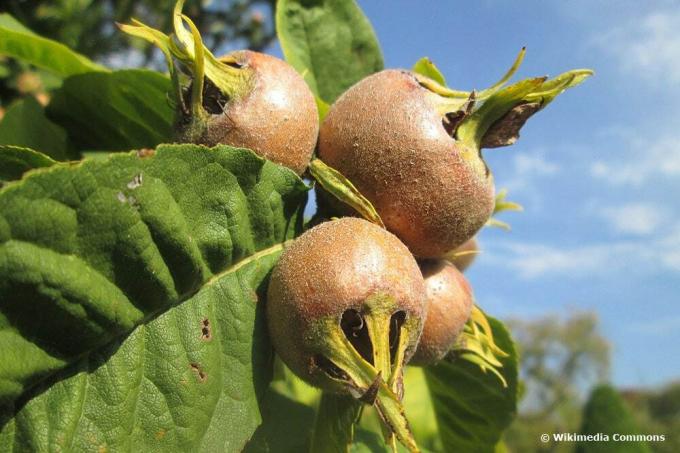
- Location and soil: sunny to partially shaded, soil rich in nutrients, rich in limestone and clay, rather dry
- Growth and size: small fruit trees between four and six meters high
- Special features: fruits can also be eaten raw after the first frost, they were already very popular with the Germanic peoples
- Fertilization: self-pollinating, but a second pollinator tree provides a higher yield
- Fruit ripening and harvest time: after the first frost
- Use: fresh consumption and processing (e.g. B. Jelly, jam)
- Popular cultivars: 'Nottingham' (popular English variety)
Service tree (Sorbus domestica)
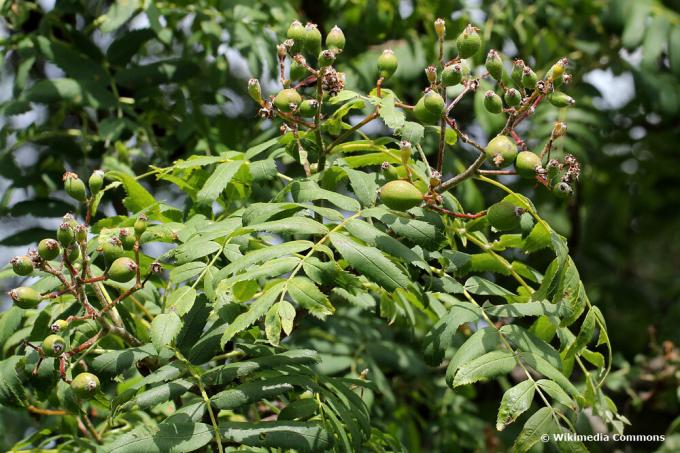
- Location and soil: sunny to partially shaded, soil rich in nutrients and well-drained, fresh, lime-loving
- Growth and size: medium-sized tree with a height of up to ten meters and a rounded crown
- Special features: seldom planted type of fruit, sour-tasting fruits are often used with pear or apple must or -compote given
- Fertilization: self-fertile
- Fruit ripening and harvest: September to October, harvested fruits are stored for 20 days, only then are ready to eat
- Use: Raw consumption and processing, can be dried like raisins
Rare / exotic species
Tip: Do you like to eat oranges, tangerines, grapefruits or kumquats? In principle, citrus fruits can also be grown here, but the different species are not hardy and should therefore always be cultivated in pots.
Nashi pear / Asian apple pear (Pyrus pyrifolia)
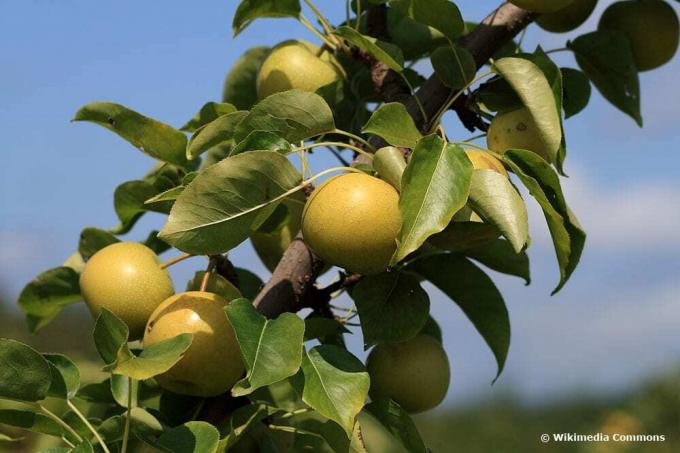
- Location and soil: sunny to partially shaded, soil fresh to moist
- Growth and size: remains small, growth height only up to about four meters, but becomes just as wide
- Special features: exotic, but also very hardy fruit trees with delicious, sweet fruit
- Fertilization: self-fertilizing
- Fruit ripening and harvest: August to October
- Use: Consumption fresh
- Popular cultivars: 'Kosui' (robust variety), 'Nijiseiki' (richly bearing), 'Chojuro' (large fruits)
frequently asked Questions
Bare-rooted fruit trees of robust species such as apples and pears should ideally be planted between autumn and spring, container goods can even be put in the garden all year round. Delicate varieties like peach and nectarine that need a lot of warmth should not be planted out until late spring or even summer.
Sweet cherries and mountain ash are particularly fast-growing. Other fruit trees, on the other hand, grow rather slowly and, especially if they are still small trees or even varieties grown from seeds, it can sometimes take a few years until the first harvest. You should therefore choose older trees or grafts, they will bear fruit more quickly.
Espalier fruits are fruit trees that are drawn on special scaffolding along fences or walls. This form of culture is very suitable for small trees, as it saves space than a single tree. Pears are particularly suitable for this, but you can also raise apples, plums, plums and many other species to form a trellis. The only requirement is a poorly growing finishing base.
